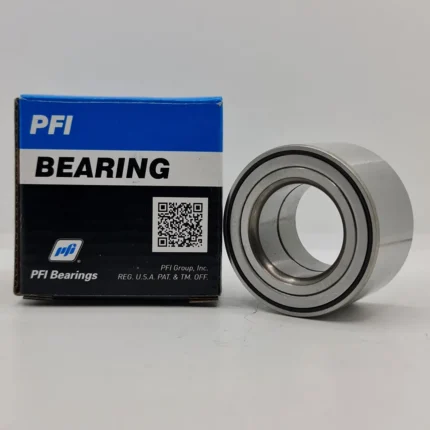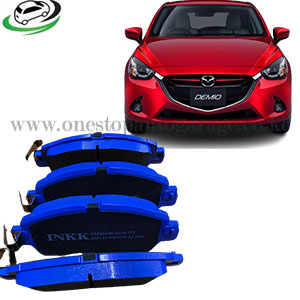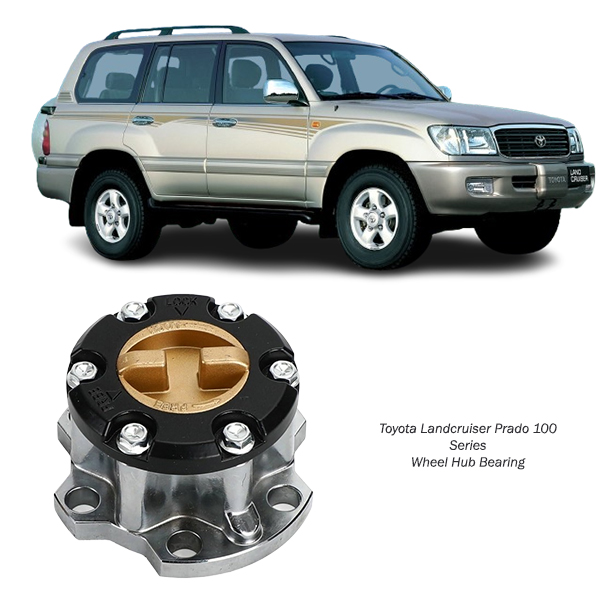-10%
Get Toyota Landcruiser Prado 100 Series Free Wheel Hub Assy 43530-60130 in Kenya
The Free Wheel Hub Assembly (commonly referred to as the freewheeling hub) is an essential component in the drivetrain of many four-wheel-drive (4WD) vehicles. It allows the front wheels to rotate freely without engaging the drivetrain when 4WD is not required, offering improved efficiency, reduced wear, and enhanced fuel economy. This guide provides a comprehensive understanding of the Free Wheel Hub Assembly, its functions, benefits, maintenance, and common issues.
What Is a Free Wheel Hub Assembly?
The Free Wheel Hub Assembly is a mechanical or automatic locking mechanism located on the front wheels of 4WD vehicles. It is a critical part of the 4WD system that connects or disconnects the front wheels from the axle shafts. This functionality allows the driver to engage or disengage the 4WD system based on driving conditions.
How the Free Wheel Hub Assembly Works
The assembly consists of:
- Outer Hub: The visible part of the hub assembly mounted on the wheel hub.
- Locking Mechanism: Engages or disengages the hub from the axle shaft, operated manually (via a dial) or automatically (based on drivetrain input).
- Internal Components: Includes gears, springs, and bearings that facilitate locking/unlocking and smooth wheel rotation.
Modes of Operation:
- Locked (4WD): The hub connects the wheel to the axle, enabling power transmission to the front wheels for traction on slippery or off-road surfaces.
- Unlocked (2WD): The hub disconnects the axle from the wheel, allowing it to rotate independently. This reduces drag and saves fuel.
Types of Free Wheel Hub Assemblies
- Manual Free Wheel Hubs:
Require the driver to manually turn a dial on the hub to engage or disengage the 4WD system. These are simple, reliable, and preferred for heavy-duty or off-road vehicles. - Automatic Free Wheel Hubs:
Engage or disengage automatically based on the transfer case’s input. These are convenient but may require more maintenance due to their complex design.
Functions of the Free Wheel Hub Assembly
- Engagement of 4WD:
Enables or disables the connection between the front wheels and drivetrain, allowing seamless transition between 2WD and 4WD modes. - Reduction of Drivetrain Wear:
Disconnecting the front wheels when 4WD is not needed reduces wear on the front axle, differential, and transfer case. - Fuel Efficiency:
Freewheeling the front wheels minimizes drag and rolling resistance, improving fuel economy. - Improved Handling:
Reduces unnecessary drivetrain engagement, allowing better handling in 2WD mode on paved roads.
Benefits of a Properly Functioning Free Wheel Hub Assembly
- Enhanced Durability:
Minimizes wear and tear on the drivetrain components by disengaging them when not required. - Fuel Savings:
Improves efficiency by reducing the load on the engine in 2WD mode. - Better Off-Road Capability:
Ensures reliable engagement of the front wheels for increased traction on challenging terrain. - Smooth Transition Between Modes:
A well-maintained hub assembly allows for seamless switching between 2WD and 4WD.
Signs of a Faulty Free Wheel Hub Assembly
- Inability to Engage 4WD:
The vehicle fails to activate 4WD mode, often due to a broken locking mechanism or worn internal gears. - Unusual Noises:
Clicking, grinding, or clunking sounds when driving can indicate damaged hub components. - Reduced Fuel Efficiency:
A stuck or malfunctioning hub may remain engaged, causing increased drag and fuel consumption. - Excessive Vibration:
Vibrations felt in the steering wheel or front axle could indicate a faulty hub. - Difficulty in Turning:
Locked hubs might cause resistance during steering, especially in 2WD mode.
Common Causes of Free Wheel Hub Issues
- Wear and Tear:
Over time, internal components like gears and bearings degrade due to regular use. - Lack of Maintenance:
Dirt, debris, and lack of lubrication can cause the hub to seize or malfunction. - Off-Road Conditions:
Exposure to mud, water, and sand can accelerate wear and clog the hub assembly. - Improper Usage:
Engaging 4WD at high speeds or under improper conditions can damage the hub.
Maintenance Tips for Free Wheel Hub Assemblies
- Regular Inspections:
Check the hub assembly during routine maintenance for signs of wear, damage, or dirt accumulation. - Clean and Lubricate:
Disassemble the hub periodically, clean internal components, and apply suitable grease to ensure smooth operation. - Engage 4WD Periodically:
Activate 4WD occasionally, even on paved roads, to keep the hubs and drivetrain components in working condition. - Avoid Overloading:
Stick to the vehicle’s recommended load limits to reduce stress on the hub assembly. - Protect from Elements:
Use protective covers or guards to minimize exposure to dirt and water during off-road driving.
Replacement of Free Wheel Hub Assembly
When to Replace:
- Persistent issues like failure to engage/disengage or recurring noise and vibrations.
- Visible damage to the hub housing or internal components.
Steps for Replacement:
- Raise the Vehicle:
Use a jack or lift to safely access the front wheel assembly. - Remove the Wheel and Hub Cap:
Detach the front wheel and hub cover to expose the hub assembly. - Disconnect the Hub Assembly:
Unbolt the hub assembly from the axle and remove it. - Install the New Hub:
Securely fit the new hub assembly, ensuring proper alignment with the axle. - Reassemble the Components:
Reattach the wheel and hub cap, then lower the vehicle. - Test Drive:
Engage and disengage 4WD to ensure the new hub operates correctly.
Aftermarket Options for Free Wheel Hub Assemblies
- OEM (Original Equipment Manufacturer):
Provides a perfect fit and reliable performance, ideal for regular use. - Heavy-Duty Options:
Built for off-road enthusiasts, these hubs are made from durable materials for enhanced longevity. - High-Performance Hubs:
Feature advanced locking mechanisms for quicker and more reliable engagement.
Advantages of Upgrading Free Wheel Hub Assemblies
- Improved Performance:
Upgraded hubs offer faster and more reliable switching between 2WD and 4WD. - Durability in Extreme Conditions:
High-quality hubs withstand harsh off-road conditions better than standard ones. - Reduced Maintenance:
Advanced designs often require less frequent maintenance.
Environmental Considerations
Discarded hub assemblies should be recycled or disposed of responsibly. Choose hubs made from recyclable materials to minimize environmental impact.
Conclusion
The Free Wheel Hub Assembly is an indispensable component of 4WD vehicles, offering versatility, durability, and efficiency. Proper maintenance, timely replacements, and choosing the right type of hub for your driving needs ensure optimal vehicle performance. Whether navigating tough off-road trails or cruising on highways, a well-functioning free wheel hub assembly guarantees a smoother, more efficient driving experience.
Follow us on Facebook for more parts.



